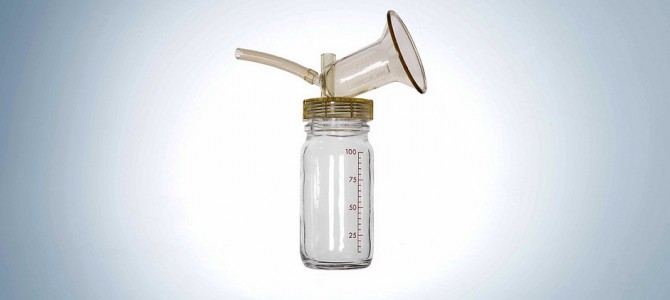Breastfeeding partisans’ greatest heroines are the pearl-wearing revolutionaries who founded La Leche League. These modest women told an embarrassed culture to grow up and stick a boob in it, because that’s what babies normally need. The success of their cause came not through legislation and protests, but education and example-setting, and there’s probably a lesson in that for all of us.
But it wasn’t just La Leche League that brought back breastfeeding. For how had breastfeeding been banished in the first place? By formula marketing, which told mothers that breastfeeding was difficult and unsanitary, from which it was a short route to demeaning. Successful families of the early 20th century bought pretty clothes, fine furniture, and clean canned foods in stores rather than sticking with scraggy homespun alternatives. Since babies eat, their food should be clean and canned as well. There was never any money to be made in breastfeeding, but ever more scientifically formulated formulas (and bottles and nipples and brushes and so forth) offered profits from a previously nonexistent market, and profits have a way of promoting themselves.
Whereas there is no more inexorable force in nature than a big corporation’s ad campaigns, it’s hard to imagine the La Leche ladies overcoming by the pure power of rightness. Indeed they didn’t. Ask anyone who’s undertaken to breastfeed in the last few decades and she’ll tell you how much she had to buy to make it happen. Pads and ointments, shells and shields. Nursing bras, and she probably tried five different styles before finding one she liked, and then bought three of that one. A non-Euclidean pillow and mathematically paradoxical casings to protect it from baby glurk. Maybe a whole new chair and stool for nursing. Nursing clothes and covers for Mom, hats and necklaces to keep Baby concealed and busy. And, of course, a pump, because breastfeeding must go on whether or not the breasts and the feeder are mutually available. Now we’ll also need milk storage bags, a cooler for transporting pumped milk, and golly! bottles and nipples and brushes and so forth. Even without figuring in extras like nursing clothes and less essential accessories, a pregnant lady who’s planning on expressing milk regularly and needs a suitable pump can add merchandise in the amount of $500+ to her baby registry in just a few clicks. Once she’s dropped all that cash, she’s pretty motivated to use what she got for it.
Breastfeeding equipment still can’t compete with the cost of formula, which is usually estimated at a minimum of $1500 for one year. Many nursing accoutrements can also be reused for subsequent children, while formula is a non-renewable resource from a parent’s perspective. Finally, no single company stands to benefit from one child who nurses as much as a formula company does from one child who doesn’t. And milk substitutes have their place–as Enfamil reminds its customers, it was a sick baby who led to the development of a “formula” which has helped and saved so many little ones for whom breast milk wasn’t an option.
But the market has succeeded in making breastfeeding, once an economic flatliner, a profitable business niche. Strictly speaking, there could be money in old school breastfeeding at the microbusiness level. But public disgust over wet nursing is a higher hurdle than the lingering cultural aversion to breastfeeding in general. The great god Health hurls thunderbolts at those who would let some possibly dirty! person nurse their baby, while his cousin Western Propriety still raises a sardonic eyebrow at women who would profit off their own physical capacities (a luxury reserved for the beautiful or athletic). eBay and Craigslist cautiously preclude human milk sales through prohibitions on bodily fluids and unpasteurized dairy products. Even for-profit and non-profit milk banks, which pasteurize human milk for preemies, accept only volunteer donations rather than paying their contributors. Commercializing breastfeeding largely remains a privilege of those who aren’t actually breastfeeding all day and night.
The breastfeeding profiteers are good at what they do. Mighty breast laboratories invent ever tech-ier pads, pumpier pumps, and more sneakily opening clothes for each new fashion season. While the La Leche Leaguer at childbirth class is very likely annoying, the Medela Pump-in-Style looks, well, stylish for the hip working mom. After all, it’s common knowledge that breastfeeding now equals educated, socially and ecologically responsible, and maternally meritorious. Let’s make sure that registry is sufficiently enlightened!
Iowa City WIC breastfeeding coordinator Chuck Dufano charitably suggests that breastfeeding lost its appeal due to dads wanting to be more involved in their babies’ lives. But human history reveals that millennia of fathers somehow found the strength to let mom handle every blessed feeding. It wasn’t until formula as such could be mass produced and marketed that it became the baby-feeding norm, and feeding babies became a duty with which the assistance of dads and non-mother others was expected. The market transformed breastfeeding into a money maker by shrewdly co-opting formula’s appealing “give Mom a break” line and enhancing it with its own dimension of moral superiority. La Leche League still gets historical credit for helping return breasts to a more holistic application. But let’s not forget that breastfeeding has also been revived and promoted to a great extent by its own retooling and the resulting profit margin. Sometimes ideas sell best as merchandise.
Rebekah Curtis writes in Illinois.









